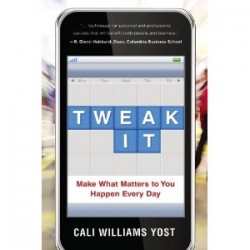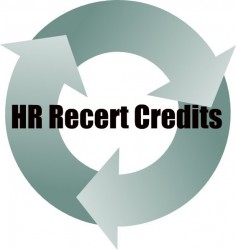Another year gone by and an amazing one ahead. Today I just want to take a few minutes to talk about some of the things I’m planning for in 2013, including events, travel, new tools, and more. And for the fans who keep coming back for the content that I create, I truly appreciate you. It’s an honor to serve the HR community in this role!
Personal
Despite the fact that I talk about HR, recruiting, leadership, etc. for 99% of the time, that makes up just a piece of my world. Like the rest of you I have social, family, volunteer, and other commitments. Here are the highlights for the year ahead:
- I’m stepping down from my volunteer role with NASHRM, my local chapter. After 4 years of working with them I want to take some time to focus on other priorities and this is my best chance. The only sad part is that RocketHR, the site that I built from the ground up starting in August 2009, is going to stop being updated. I expect it to shut down at some point, and I have copied all of the content over to this website so it will not be lost.
- I’m setting another goal to read 25 business books in 2013. I know I’ve been doing a lot of book reviews lately (and I have several more in the works). I realized that if I’m reading them, the least I can do is share the content highlights with you guys so you get the benefit of learning from industry experts without having to invest the time to read 25+ books. That’s why I do book reviews, so bear with me as I roll out more in the future. I hope they’re helpful for you!
Work
Again, I spend plenty of time writing about this HR stuff, but I only do that after I’ve spent 8+ hours that day working in my full time HR generalist role. Since my promotion a few months ago I’ve had the opportunity to do great things. I’ve made a few missteps, but I’ve also helped us grow in some key areas. Really excited about what is coming in the next 12 months.
- Nothing is solid right now, but I’m really hoping that we grow enough to bring on an HR assistant next year. We are pushing the limit with our high-touch HR/leadership style, and we’re going to have to grow or reduce the level of service in the coming year. It’s not an easy choice, but it’s a necessary one.
- I’m planning a major HR audit in January now that the end of year performance/salary changes are out of the way. I’m going to build in about 40 hours during the month to take care of dozens of actions (big and small) that have been on a growing list for a while. I’m really excited to get that accomplished and think there will be some valuable lessons that I plan to share here once I’m done.
upstartHR
Finally, this is the area of my life that I get a massive amount of enjoyment from, but it takes up a relatively small portion of my time. Some of you know this, but I ride to and from work every day (~40 minute commute each way) and I listen to… Nothing! I just love sitting and thinking about ideas to write about and share with others. Yeah, kinda nerdy, but it’s working for me. :-) Here is a list of the big things on my roadmap for 2013:
- SHRM 2013 in Chicago. ‘Nuf said.
- HRevolution 2013 in Las Vegas. Heck yeah.
- Currently developing a tool for entry level HR pros to help them get a job and get promoted. Really excited about that and can’t wait for it to debut. It’s in the middle stages of development, and I’m currently working with an “inner circle” of testers to get that sharpened up for the rest of you who might be interested.
- I have plans for 3-4 other products, including a GPHR tool, an 8 week version of the PHR/SPHR study course, and more. So many ideas, so little time!
- I’m putting some time and effort into developing more video content. I spent about 3 hours today doing an actual setup (not just me in front of the webcam) and I think the quality’s much better than in the past. I am still fine tuning, but expect more of that medium in the coming year.
- I’m working to do a few speaking proposals for state SHRM conferences and other events.
- Plus a few surprises. Can’t let all the cats out of the bag!
Fun facts and info
I started upstartHR in April 2009. Since then the site has grown beyond my wildest dreams. It still amazes me to see these kinds of information about who’s reading content on upstartHR:
- The site gets right at 10,000 visitors every month. Google is my biggest traffic source, but I also have a respectable number of referrals from social sites and email newsletters.
- I have about 1,500 subscribers who read everything that I write.
- I expect traffic to double in the coming year. I’ve had amazing growth so far and it’s reaching a critical mass. I might be overshooting but I’d rather stretch than not.
All in all, this is still an amazing journey, and I’m thrilled to be able to share it with each of you. I appreciate the time and effort you put into reading and sharing the things that I write, and I hope you get as much from reading as I do from writing.
One more thing before we call it a day. I read a lot of stuff from Chris Guillebeau, and he talks about the world changing people out there. He says (paraphrasing) that their ability to influence and change the world is not because they have 10,000 interested followers, but because they have 1,000 true fans.
Those true fans are the “small army” carrying forward the ideas and concepts that will truly change the world. I think of you as one of those in my small group of true fans. Together we can change the world of HR, one interaction at a time. Never lose sight of the fact that you have friends out there who believe as you do and truly want you to be successful.
I wish you all a happy, healthy 2013. Go out there and make things happen.
 If you’re not familiar, there’s a common phrase this relates to, which is “monkey on your back.” It’s a metaphor for an unwanted burden that it’s difficult to get rid of. When you accept someone else’s problems, you’re taking the monkey off their back and putting it onto yours. Don’t do it. Don’t take the monkey.
If you’re not familiar, there’s a common phrase this relates to, which is “monkey on your back.” It’s a metaphor for an unwanted burden that it’s difficult to get rid of. When you accept someone else’s problems, you’re taking the monkey off their back and putting it onto yours. Don’t do it. Don’t take the monkey.
 So why don’t we give it a shot?
So why don’t we give it a shot? HR Recertification Credits Summary
HR Recertification Credits Summary